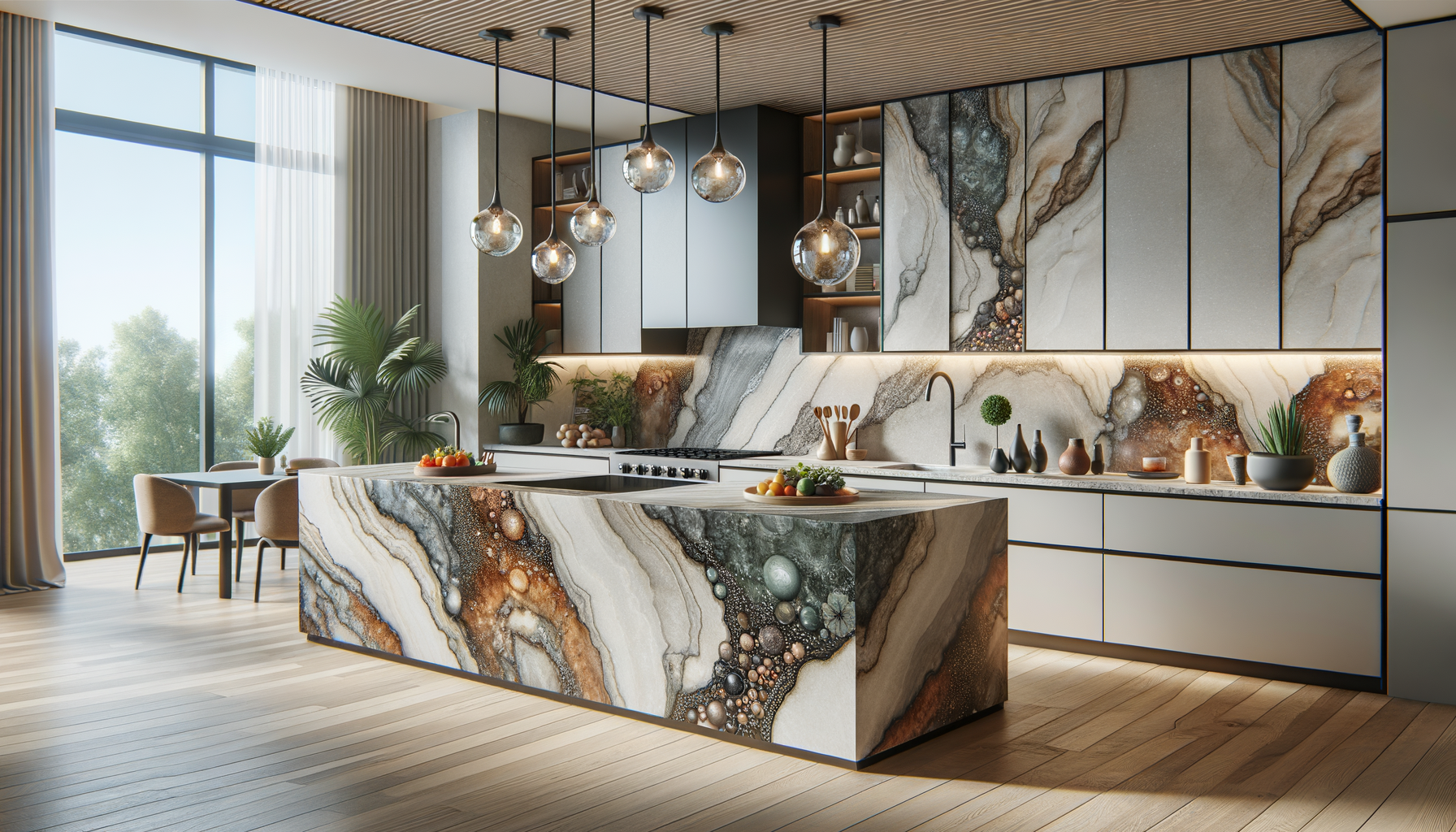Exploring the Shift: Sintered Stone as a Bold Alternative to Quartz Countertops
As designers seek innovative materials, sintered stone emerges as a compelling choice over traditional quartz countertops, offering unique benefits for luxury home designs.

The Rise of Sintered Stone: A Bold Alternative
In the world of interior design, the materials used for countertops have a significant impact on both aesthetics and functionality. While quartz has long been a popular choice due to its durability and variety of styles, a new contender is making waves: sintered stone. This engineered material is crafted using natural minerals, subjected to high pressure and temperature, resulting in a product that is both beautiful and robust. Sintered stone offers a bold alternative to quartz countertops, appealing to those who seek innovative and sustainable options.
One of the key advantages of sintered stone is its remarkable resistance to heat, stains, and scratches. Unlike quartz, which can be susceptible to discoloration from prolonged exposure to heat, sintered stone maintains its integrity under similar conditions. This makes it an ideal choice for busy kitchens where durability is paramount. Additionally, sintered stone is non-porous, which means it does not require sealing and is highly resistant to bacteria and mold, ensuring a hygienic surface for food preparation.
Furthermore, sintered stone offers a wide array of colors and finishes, allowing designers to experiment with bold and unique looks. From sleek, modern aesthetics to more traditional styles, this material can be tailored to suit any design preference. As sustainability becomes increasingly important, sintered stone’s eco-friendly manufacturing process, which utilizes natural materials and minimizes waste, aligns well with the values of environmentally conscious consumers.
Designers’ Preference: Sintered Stone Over Quartz
Interior designers are increasingly gravitating towards sintered stone over quartz for several compelling reasons. The versatility and performance of sintered stone make it a preferred choice for those aiming to create spaces that are both functional and visually striking. Designers appreciate the ability to customize sintered stone to achieve specific design visions, as it can be produced in large slabs with consistent patterns, eliminating the need for seams and enhancing the overall aesthetic.
Another factor contributing to the shift is the growing demand for sustainable materials. Sintered stone’s eco-friendly production process, which involves using recycled materials and reducing carbon emissions, resonates with designers who prioritize sustainability in their projects. This commitment to environmental responsibility is becoming a key consideration in modern design, and sintered stone offers a solution that aligns with these values.
Designers also value the durability and low maintenance of sintered stone. Unlike quartz, which may require periodic sealing, sintered stone’s non-porous surface is inherently resistant to stains and bacteria, making it an excellent choice for high-traffic areas. This quality is particularly appealing in commercial spaces or homes with active lifestyles, where ease of maintenance is a priority.
Benefits of Sintered Stone in Luxury Home Design
Luxury home design is all about creating spaces that are not only visually stunning but also functional and enduring. Sintered stone is emerging as a material of choice in this realm due to its exceptional qualities. Its ability to mimic the appearance of natural stone without the associated drawbacks, such as porosity and susceptibility to staining, makes it an attractive option for high-end projects.
One of the most significant benefits of sintered stone in luxury design is its ability to withstand the test of time. Its resistance to UV rays ensures that colors remain vibrant and unchanged, even in sun-drenched spaces. This characteristic is particularly valuable in luxury homes, where maintaining the pristine condition of materials is essential to preserving the property’s value.
Moreover, sintered stone’s versatility allows for seamless integration into various design elements beyond countertops. It can be used for flooring, wall cladding, and even outdoor applications, providing a cohesive and sophisticated look throughout the home. The material’s ability to be cut into thin slabs without compromising strength further expands its potential uses, offering limitless design possibilities for architects and interior designers.
Comparing Sintered Stone and Quartz: A Practical Perspective
When comparing sintered stone and quartz, both materials offer distinct advantages, but sintered stone often provides a practical edge in several areas. While quartz is known for its durability and variety of styles, sintered stone surpasses it in terms of heat resistance and maintenance requirements. This makes sintered stone a more practical choice for homeowners who prioritize performance and longevity.
In terms of design flexibility, sintered stone’s ability to replicate the appearance of natural stone with precision offers a broader range of aesthetic options. This is particularly appealing to those seeking a luxurious look without the maintenance challenges of natural stone. Additionally, the large slab sizes available with sintered stone reduce the need for seams, creating a sleek and uninterrupted surface that enhances the overall visual appeal.
From a cost perspective, sintered stone can be comparable to quartz, depending on the specific product and installation requirements. However, the long-term benefits, such as reduced maintenance and increased durability, often justify the investment for those seeking a high-quality, enduring material for their homes.
Conclusion: Embracing the Future of Design with Sintered Stone
As the design landscape evolves, sintered stone is proving to be a formidable alternative to quartz countertops. Its combination of durability, versatility, and sustainability makes it an appealing choice for both designers and homeowners looking to create spaces that are not only beautiful but also practical and enduring.
For those involved in luxury home design, sintered stone offers a unique opportunity to push the boundaries of creativity while adhering to principles of sustainability and functionality. As more people become aware of the benefits of this innovative material, it is likely that sintered stone will continue to gain prominence in the world of interior design, paving the way for a future where bold and sustainable choices are the norm.